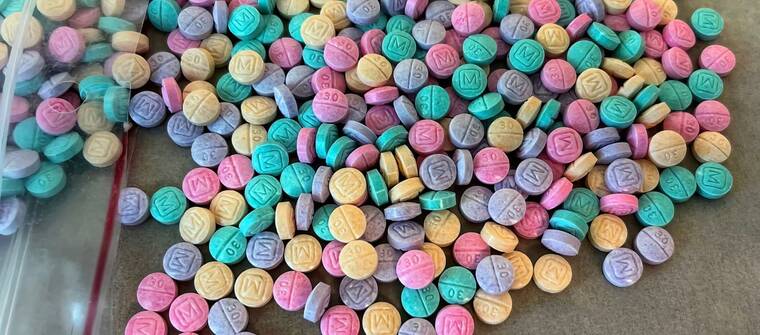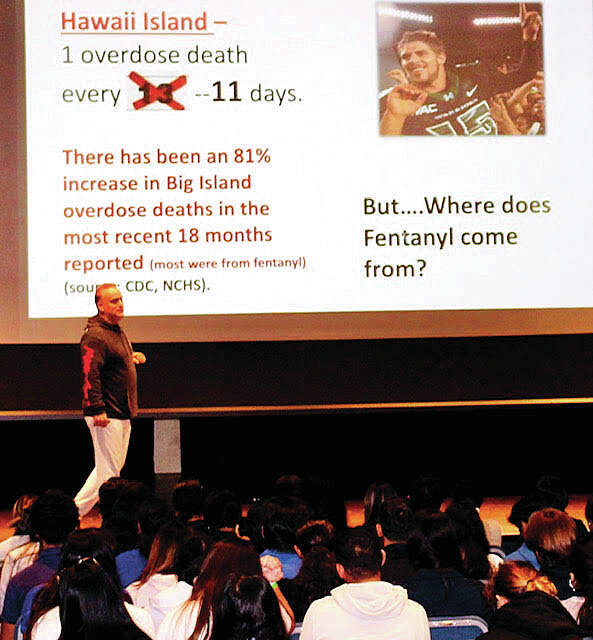A new batch of fentanyl has made its way to the Big Island, the Hawaii High Intensity Drug Trafficking Area revealed Monday via a Threat Bulletin.
The alert was issued due to information the Hawaii HIDTA, a federal program that assists local law enforcement, received of a recent shipment of suspected powdered fentanyl that was smuggled into and distributed on Hawaii Island, along with a large quantity of rainbow-colored fentanyl pills. The agency added the suspected powdered fentanyl has resulted in a high number of overdoses, with multiple fatalities.
The alert was issued to increase community awareness and advise first responders, healthcare providers and substance users of the increased risk of overdose.
The Hawaii Police Deoartment did not respond to West Hawaii Today’s request for comment as of press-time Tuesday, stating that a press conference was being set up for all media outlets sometime Wednesday.
Fentanyl — whether brightly colored or simply white — is a synthetic opioid that is 50 times more potent than heroin and 100 times more potent than morphine. Just 2 milligrams of fentanyl, which is equal to 10-15 grains of table salt, is considered a lethal dose.
The CDC reported 107,622 Americans died of drug overdoses in 2021, with 66% of those deaths related to synthetic opioids like fentanyl.
Kimo Alameda, Hawaii Island Fentanyl Task Force leader, said Tuesday the situation on Hawaii Island is getting worse with the number of fatal overdoses on the rise.
“A month ago we were reporting one death every 13 days on Hawaii Island and now it’s one death every 11 days,” he said. “In a recent presentation to a nonprofit, the staff indicated that a 19-year-old in their program had overdosed and died from fentanyl.”
Fellow task force member and addiction medicine specialist, Dr. Kevin Kunz said he has heard of several overdoses from his patients in the last two weeks.
“New patients coming in are asking for MOUD (Medication for Opioid Use Disorder) reporting that their friends use of drugs is getting scarier, with lots of close calls, and they want to get out of the addiction,” said Kunz.
He also said the number of reported overdoses and deaths may have spiked, but because of the amount of time it takes to get toxicology reports back, we will not know current trends.
“If the Big Island has to wait nine months for the final lab toxicology reports, then no one will know the trouble we are in until more deaths or multiple deaths close together,” he said.
Meanwhile, Alameda said the task force has doubled efforts to decrease the supply via law enforcement and the demand through islandwide education.
“The presentations are hitting home and youth are hearing the facts and taking the message home to their parents,” he said “Yet, we must continue the good fight by helping our friends with addictions seek help because recovery is possible.”
Alameda urged parents and the public to report any suspicion of illegal drug distribution, especially in the pill form to the police. Tips can also be called in anonymously to the police department’s 24-hour drug tip hotline at (808) 329-“ZERO-ICE,” or (808) 329-0423, in West Hawaii and (808) 934-“VICE,” or (808) 934-8423, in East Hawaii.
“We will continue islandwide prevention education until everyone hears the truth. We can beat this if we continue to work together — one island, one love,” said Alameda.


